As a video game franchise, Assassin’s Creed has been subject to its fair share of positives and negatives – almost to the point where its own continuing story is as complex as the narratives depicted in each respective title. From truly humble beginnings to booming successes, some tainted by an unhealthy mix of corporate injustice and unrealistic expectations from fans, with others moving the franchise forward through controversial, yet successful, genre shifts; the franchise – for the better – persists. The latest addition is Assassin’s Creed Shadows, taking players to a setting and time period fans have long sought after: feudal Japan. Thanks to renewed commitment melding authentic storytelling with exciting gameplay, Ubisoft can finally rest easy knowing Assassin’s Creed Shadows might be one of the franchise’s best titles yet.

It is the late 1500s. Oda Nabunanga’s forces march on and Japan is on the brink of being conquered from within. At the same time, however, foreign forces have also breached local shores, slowly breeding both corruption and opportunity from agents within the country’s highest standing authorities. As Japan enters the Azuchi-Momoyama period, warring factions are vying for control of the land. It is a tumultuous era, ripe for exploration and perfect for a story about betrayal, revenge, loyalty, and ultimately, assassins.
While I am not at liberty to discuss any plot points beyond the opening sequence, the game does an exceptional job of giving players a clear understanding of key events and important individuals involved in the shaping of the world. The stakes are high, and players are made keenly aware of this fact. With the exception of a quick introduction on how Yasuke entered his position with Oda Nabunanga, Assassin’s Creed Shadows only truly starts once it thrusts players into the shoes of Noae, a shinobi hailing from Iga Provence. As a shinobi, Noae is trained in the art of stealth and subterfuge. It is with her that players are introduced to the sneaking and stealthy approaches many have come to love from past titles.
After a few hours, players are reintroduced to Yasuke – the franchise’s first protagonist based on a real person. The samurai Yasuke wields a variety of weapons, all of which have devastating attacks and moves making dispatching foes a breeze. Yasuke has a massive pool of health and comes with armour. It is safe to say that he fundamentally changes the flow and combat of traditional Assassin’s Creed gameplay. Playing as Yasuke discourages careful stratagem. Instead, players are encouraged to barge head-first into groups of enemies.
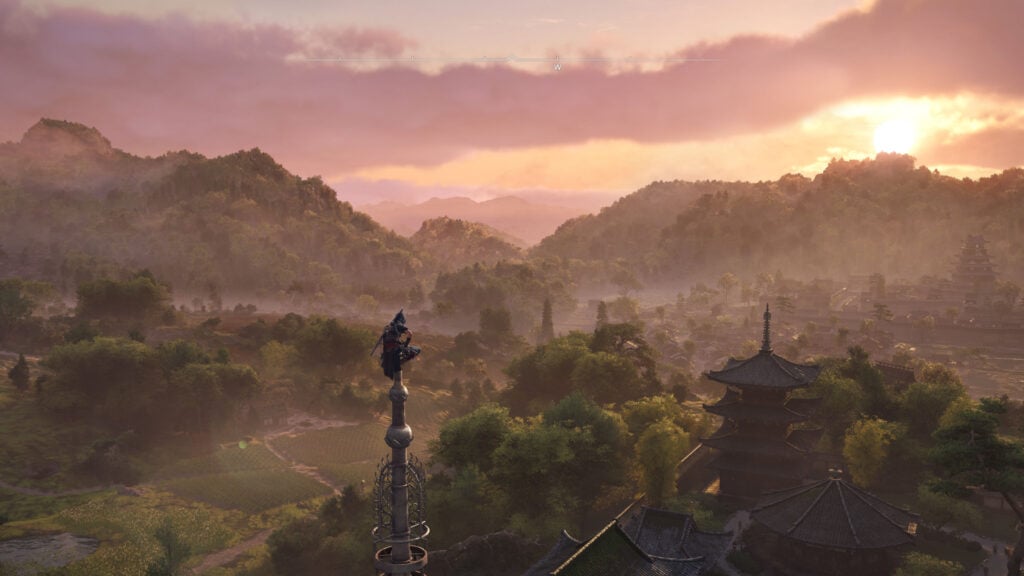
Past titles with dual protagonists usually feature the same caveat where both characters largely follow the same gameplay loops, with very few defining characteristics to set them apart. In Assassin’s Creed Shadows, this mechanic has been reinvented to tailor gameplay based on who players choose to play. Yasuke is immensely powerful and an efficient killer. As such, the game encourages players to switch to Yasuke in order to clear heavier defended fortresses or castles. From the moment a fight starts, through to the final cinematic deathblow, players can feel his strength seep through the controller. On the other hand, switching to Naoe comes with the additional feeling of accomplishment one often gets when taking foes down in stealthier ways. Equipped with shuriken, smoke balls, and more; players can dart in and out of shadows, climb rooftops using a grappling hook, and drag bodies around corners long before others are alerted to Naoe’s presence.
Further enhancing the gameplay gap between protagonists is each character’s ability to learn new skills and traits. As with previous titles, Assassin’s Creed Shadows allows players to further build out Naoe and Yasuke with abilities unique to them. Dash through multiple foes and knock them all unconscious in one fell swoop as Yasuke, or tap into those shinobi reflexes and dodge any fatal attacks as Naoe; Ram through doors and send any foe on the other side reeling as Yasuke, or slow down time and lurk from shadow to shadow as Naoe.
This strange mix of gameplay mechanics may seem disparate and foreign when compared to the traditional Assassin’s Creed mantra, but the two protagonists ultimately complement each other in beautiful and intriguing ways. With that said, there may be some frustration at the start, as understanding and exploring the differing ways of play makes things initially feel slow and sluggish. While Yasuke is strong and able, some may have a natural inclination to switch back to Naoe for a stealthier approach. At first it feels unnecessary — imagine if Da Vinci became a playable character in Assassin’s Creed II. There is no real parkour, and stealth is out of the question. However, as the two characters start to interact with one another, and as the game smartly introduces missions where both characters are necessary, the inherent need to swap back to the favoured character falls away, instead being replaced by an appreciation of how both are equally useful.
In addition to entering missions and tackling enemy forts with both characters, players can also call in assistance to distract or eliminate tougher foes. As the story continues and as players complete optional side activities, more allies are unlocked. These allies, along with any other gear and unlockables in the game, can be upgraded and customised with unique outfits, skins, and even perks. Better still, everything from characters through to allies, equipment, and even the skill trees, all serve to enhance the setting presented in Assassin’s Creed Shadows.
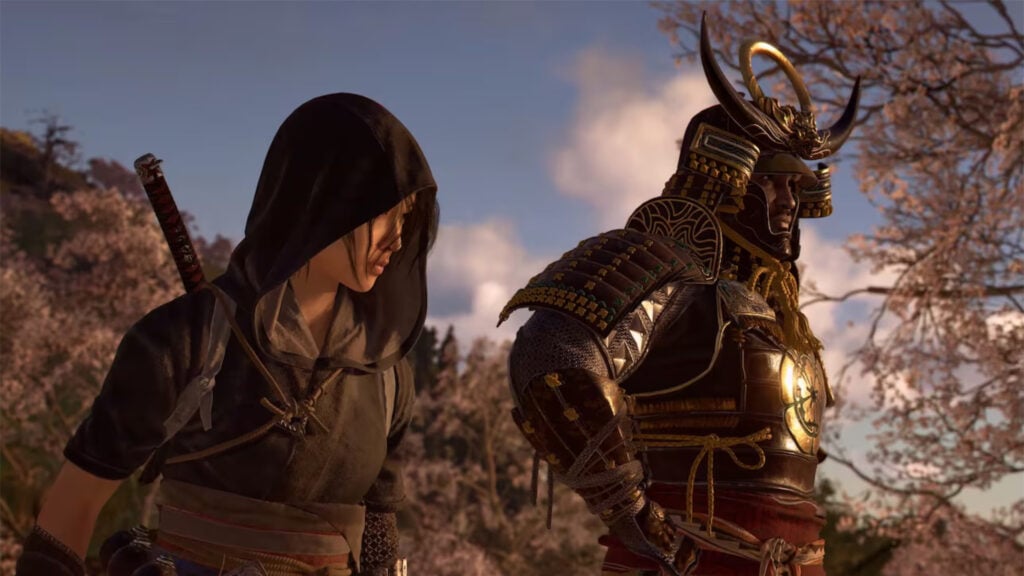
While a dynamic weather system is not new to the franchise, weather in Assassin’s Creed Shadows plays a larger role than ever before. Depending on the season, completely new pathways and stealth opportunities come into play. Similarly, players need to adapt to the weather – since a pond that can be used to hide in during most seasons, will be frozen over in the winter. The weather system also dictates some optional missions, available store inventories, and non-playable character (NPC) crowd Artificial Intelligence (AI), who have to adapt along with the weather. Locales, unsurprisingly, look amazing in different weather conditions.
The development team over at Ubisoft Quebec has done a fantastic job capturing the diverse locations and biomes of feudal Japan. Every area brims with details and explorable nooks and crannies. The map consists of multiple regions, each with its own prefectures, overseeing fortresses, and environmental detail telling its own story as the game progresses. Moreover, Ubisoft have gone above and beyond their usual call of duty by casting within the bounds and scope of the cast, whilst also finding talent befitting the narrative.

Naoe is voiced by Masumi Tsunoda, who is best known for her role as Akemi in Yakuza Princess. She does an incredible job as Noae, with an English performance setting the bar for any future title in the franchise. Similarly, Yasuke’s voice actor, Tongayi Chirisa, is best known for his roles as Father Nicholas in The Jim Gaffigan Show, Justin in iZombie, and Cheetor in Transformers: Rise of the Beasts. His switch between English and Portuguese is great, but it’s the remarks of character quirks that immediately solidifies him as the ideal casting choice.
With the above in mind, however, it must be noted how Assassin’s Creed Shadows also features a first-in-franchise option: the ability to instil “Immersive Mode”, where all english cast are replaced with Japanese counterparts, with English and Portuguese languages only being vocalised when the story and setting demands it. This is an incredible addition to the game, with Tongayi Chirisa reprising his role as Yasuke (in Japanese!), and Miyuri Shimabukuro (known for her role in Mobile Suit Gundam: Witch From Mercury) co-starring as Noae. While English will be the preferred language to play in for many, it is clear Immersive Mode has the upper hand (much like the sub/dub debate for Anime).
Moreover, the game comes with additional settings enhancing both combat and stealth gameplay. Enhanced difficulty sliders (as well as an overarching “Expert Mode”) puts a new spin on how well players need to take to the shadows as Noae. Traditionally, enemies never look up. With Expert Mode, however, this changes. Depending on how players set up their difficulties, going prone on rooftops and slowly lurking through tall grass and bushes becomes imperative. Similarly, enemy AI also becomes smarter, with searches taking place longer, and even more effectively, resulting in the need to move from last known locations more frequently.
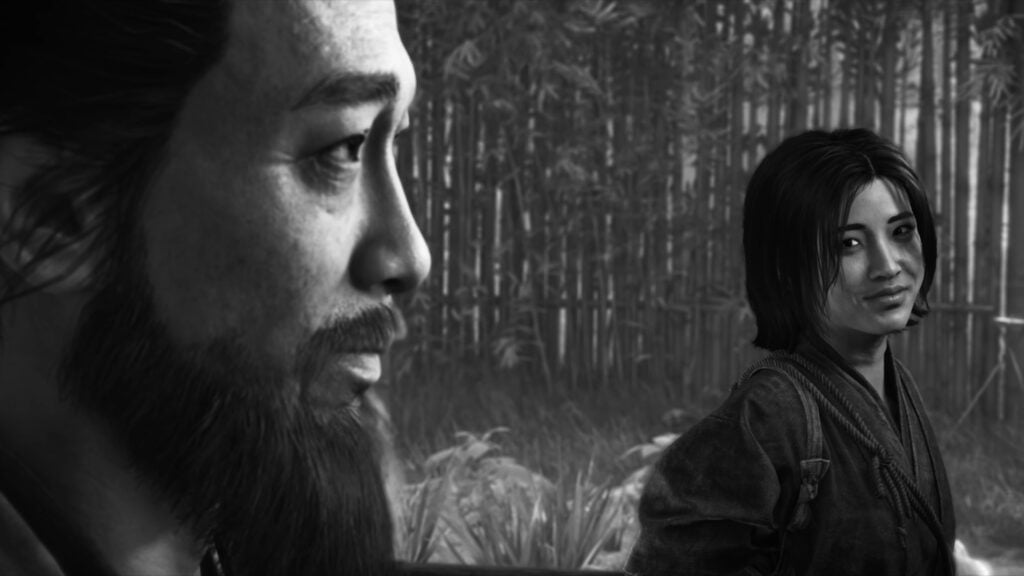
Despite some fresh new additions, Assassin’s Creed Shadows ultimately follows the same gameplay mechanics as other franchise titles: explore, collect, climb to the top of a tall structure to reveal the surrounding area, repeat. Missions are also structured similarly, whereby players have to uncover hints and clues to ultimately lead them toward their next target. The Onryo, or Shimbakafu, act as this title’s group of villains who players will systematically take out as they explore, continue the story, and uncover clues to their whereabouts. While not entirely at fault to the game, the predictable nature of Ubisoft titles makes this facet of the game a little more tedious than one would like. With that said, Assassin’s Creed has largely eked out all of the unnecessary bloat over its many iterations, and Assassin’s Creed Shadows takes advantage of these features with aplomb.
A welcome new mechanic, however, comes by way of the new Hideout system, whereby players can find, shop for, unlock, or loot (from chests and as mission rewards) cosmetics, materials, and rooms enhancing the Hideout in some way or another. The Hideout is fully customiseable, and players can put down whatever they want, where they want, with very few limitations. While there are some rooms and cosmetics that can only be placed once, these are few and far between, ensuring no Hideout will ever look exactly the same.
In terms of performance, players need not worry too much. With the pre-release version enjoyed for review, only a single crash was presented, and loading between important scenes was always done in seconds or less beyond the initial load into the game. The game works nicely with Quick Resume, however Ubisoft Connect retains the same bugs it always has with this mechanic, and stuttering seemed nonexistent on Xbox Series X, even with Quality Mode active.
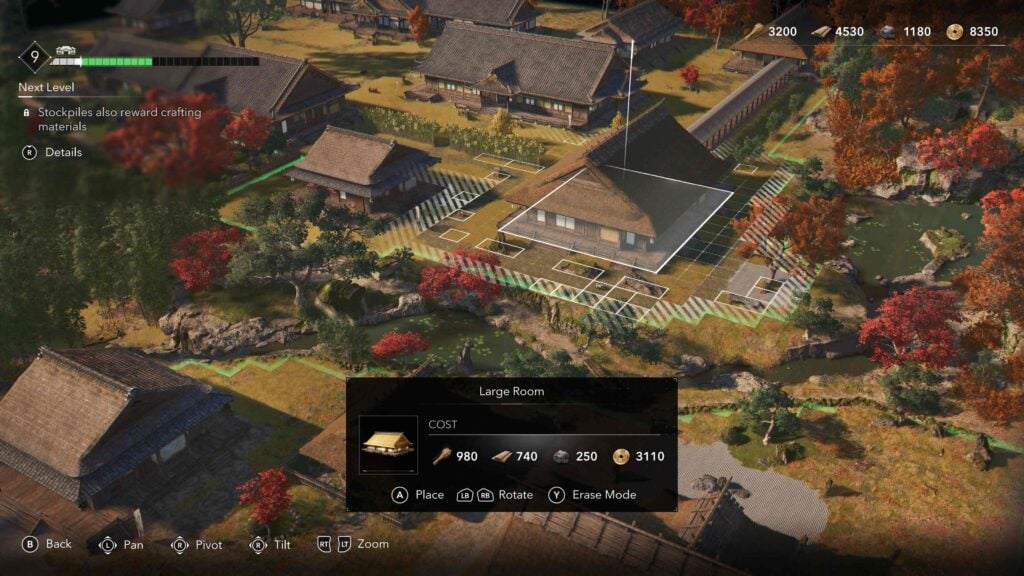
Since the massive genre shift from third-person platforming to open-world roleplaying-games, the series has found a comfortable footing. In so doing, the company has managed to spawn four really great titles. Assassin’s Creed Origins introduced fans to how diverse the franchise could be, while Odyssey refined the subject matter and paved the way for Valhalla to be one of the biggest titles the franchise has released since its inception. Assassin’s Creed Mirage, on the other hand, reigned it back in, cut what needed to be cut, and perfected the open-world formula, leading the way for an all new title set in a dream locale during a highly sought after time period. As a result, Assassin’s Creed Shadows features exceptional storytelling, with stealth mechanics going above and beyond what fans could think of, whilst boasting two protagonists for the price of one.
Assassin’s Creed Shadows is, without a doubt, a breathtaking addition to the long running franchise. Whether sneaking through shadows as Noae or charging headfirst into battle as Yasuke, the game offers a dynamic experience making every choice feel consequential. With its immersive setting, refined combat mechanics, and an innovative weather system affecting gameplay, Assassin’s Creed Shadows elevates the franchise in ways that will leave eager players wanting for more. While Assassin’s Creed Shadows might follow some familiar gameplay tropes, its execution is far from formulaic. With a wealth of side content, a customisable hideout system, and the promise of a world teeming with historical intrigue and fierce battles, it is clear Assassin’s Creed Shadows is poised to be one of the franchise’s most memorable and impactful titles. Fans old and new alike will find much to love in this stunning and daring chapter in the Assassin’s Creed saga.
Verdict:
EXCEPTIONAL
| PROS | CONS |
| Feudal Japan | Same old Ubisoft formula |
| Dual Protagonist system actually well implemented | Yasuke can feel like an odd addition at the start |
| Excellent Performance | |
| Immersive Mode is a wonderful addition |
Title reviewed on Xbox Series X with code supplied by Ubisoft.
Review Methodology | Ethics Policy
Junior Editor at Vamers. From Superman to Ironman; Bill Rizer to Sam Fisher and everything in-between, Edward loves it all. He is a Bachelor of Arts student and English Major specialising in Language and Literature. He is an avid writer and casual social networker with a flare for all things tech related.

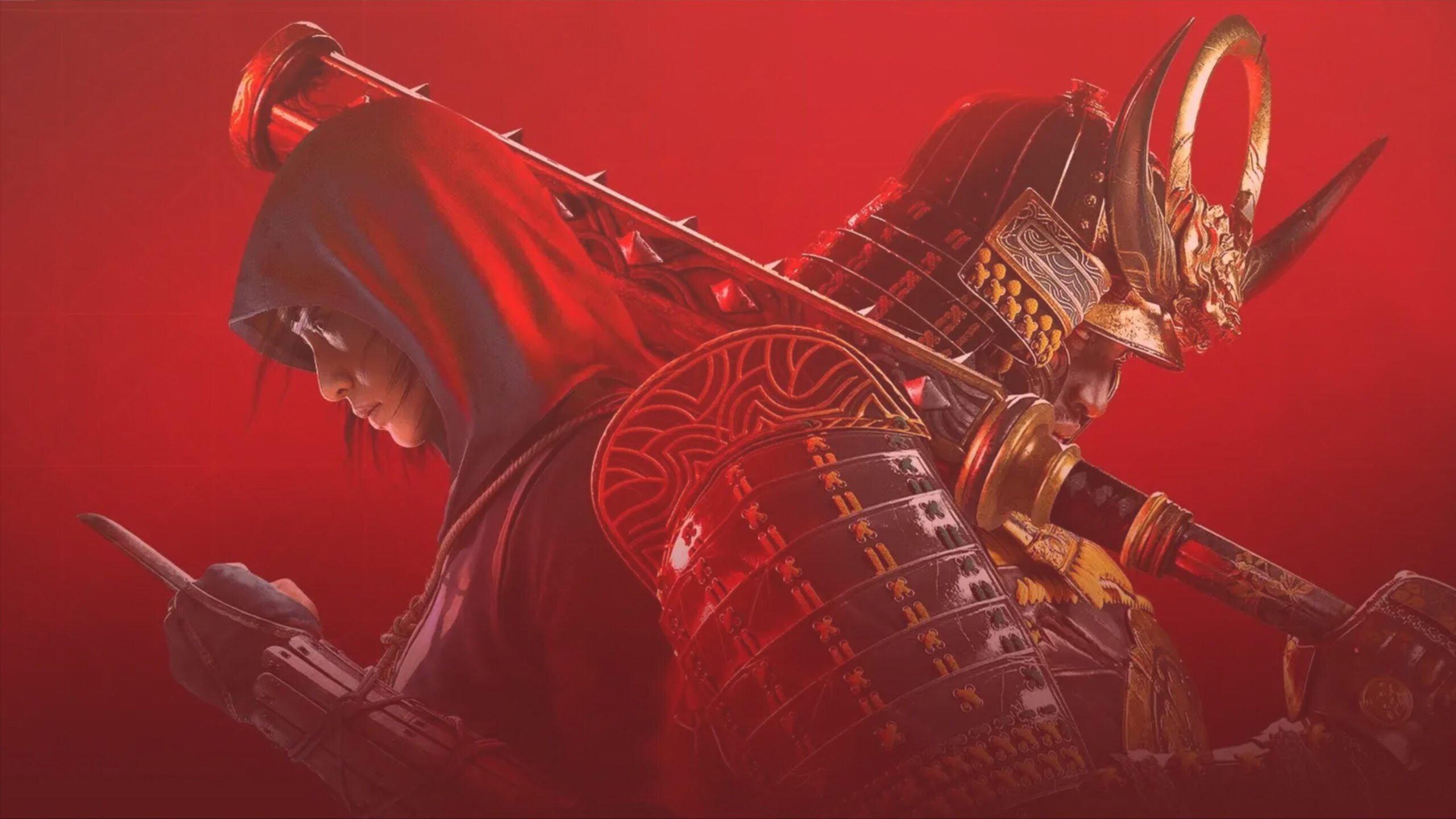





![Rainbow Six Siege Operation Deep Freeze [Hands On]](https://vamers.com/wp-content/uploads/2023/11/Vamers-Previews-Gaming-Operation-Deep-Freeze-03-218x150.jpg)


![Rainbow Six Siege Operation Heavy Mettle is Ram-tastic [Hands On]](https://vamers.com/wp-content/uploads/2023/08/Vamers-Gaming-R6S-Heavy-Mettle-01-218x150.jpg)



![Rainbow Six Siege Vector Glare continues the Year 7 promises [Hands-on Preview]](https://vamers.com/wp-content/uploads/2022/05/Vamers-Gaming-R6S-Vector-Glare-Banner-218x150.jpg)

![Preparing for Dawn of Ragnarok [Assassin’s Creed Valhalla Guide]](https://vamers.com/wp-content/uploads/2022/03/Vamers-Gaming-Preparing-for-Dawn-of-Ragnarok-Banner-alt-fixed-218x150.jpg)




![Ghost Recon: Wildlands [First Impressions]](https://vamers.com/wp-content/uploads/2017/03/Vamers-Vamers-Exclusive-Vamers-First-Play-Ghost-Recon-Wildlands-First-Impressions-Vamers-First-Play-01.jpg)